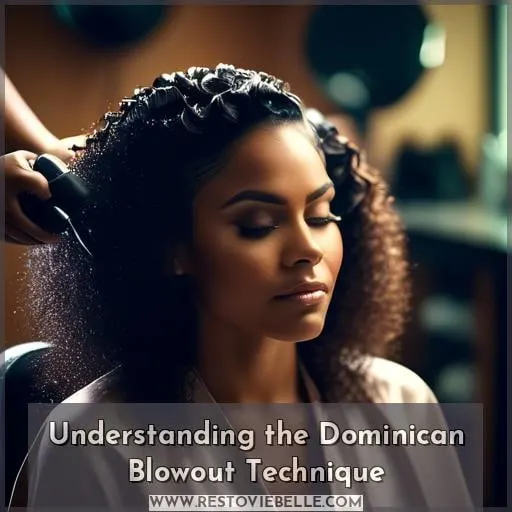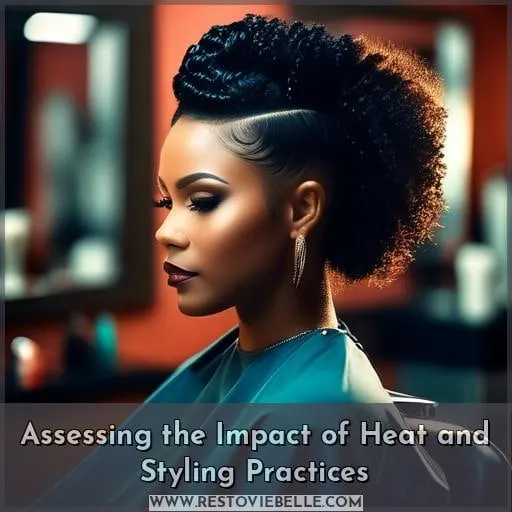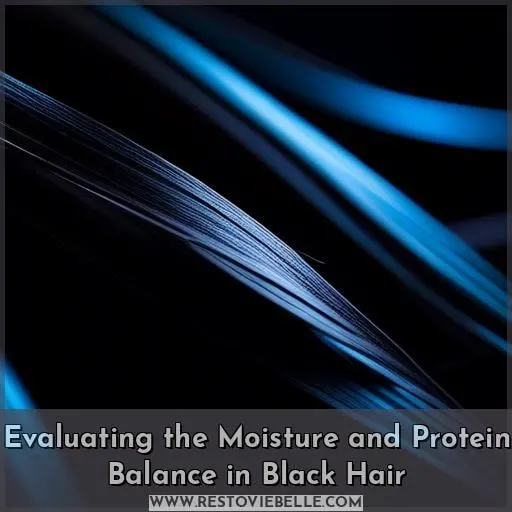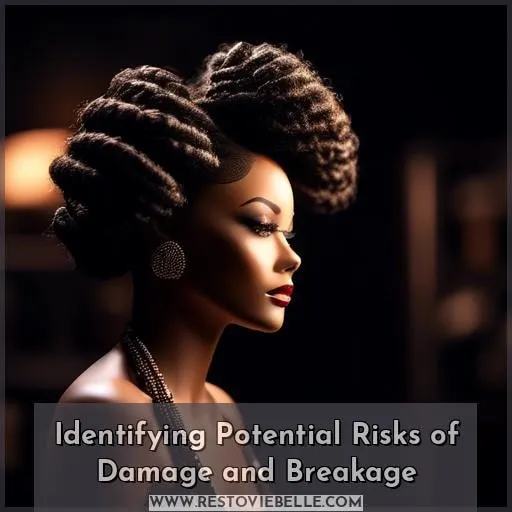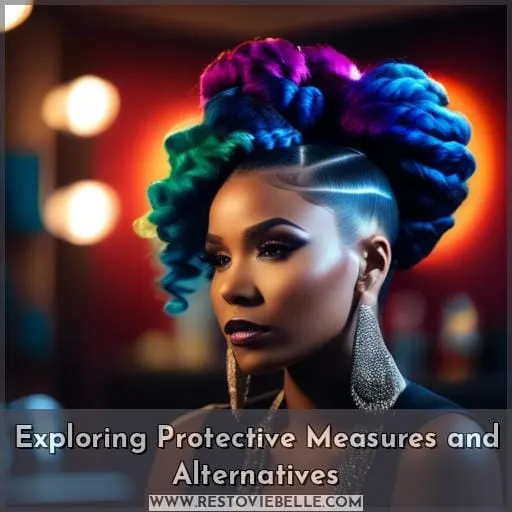This site is supported by our readers. We may earn a commission, at no cost to you, if you purchase through links.
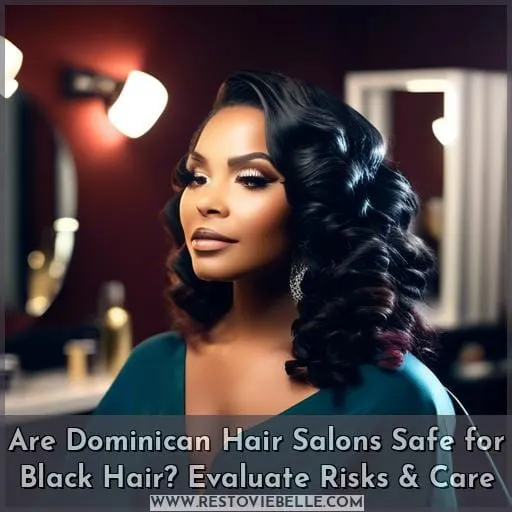 Nearly 80% of women with textured hair have experienced heat damage, raising concerns about styling practices, especially those involving high heat.
Nearly 80% of women with textured hair have experienced heat damage, raising concerns about styling practices, especially those involving high heat.
If you’re contemplating a visit to a Dominican hair salon, you’re likely drawn to the allure of the Dominican Blowout—a technique promising silky, straight locks without chemicals.
However, it’s crucial to weigh the potential risks and benefits for black hair. This article delves into the Dominican Blowout, assessing its impact on black hair’s moisture-protein balance and identifying protective measures.
Let’s explore whether Dominican hair salons are safe for your hair, ensuring you make an informed decision about your hair care journey.
Yes, Dominican hair salons can be good for black hair, but they may not always prioritize hair health, using techniques like excessive heat and rough handling that can damage black hair.
Table Of Contents
- Key Takeaways
- Understanding the Dominican Blowout Technique
- Assessing the Impact of Heat and Styling Practices
- Evaluating the Moisture and Protein Balance in Black Hair
- Identifying Potential Risks of Damage and Breakage
- Exploring Protective Measures and Alternatives
- Frequently Asked Questions (FAQs)
- How can I communicate effectively with a stylist at a Dominican salon if I don’t speak Spanish?
- Are there specific hair care products that Dominican salons use which might not be suitable for black hair?
- What are the long-term effects of regularly getting Dominican blowouts on natural black hair?
- Can Dominican hair salon techniques be modified to be less damaging while still achieving straight hair?
- How do Dominican salon costs compare to traditional African American salons for similar services?
- Conclusion
Key Takeaways
- Dominican hair salons, known for the Dominican Blowout technique, can be harsh on black hair due to the use of excessive heat and potential rough handling, which may lead to dryness, damage, and altered curl patterns.
- There are concerns that some Dominican salons may sneak relaxers into their products, which can compromise the integrity of natural black hair and lead to breakage and hair loss.
- Black hair requires a balance of moisture and protein to maintain its health, and the intense heat styling practices at some Dominican salons can strip hair of moisture, leading to brittleness and breakage.
- To protect black hair, it is recommended to avoid chemical relaxers, limit heat styling, incorporate moisture treatments, use gentle styling products, and embrace protective hairstyles.
Understanding the Dominican Blowout Technique
When you step into a Dominican salon for a blowout, you’re embracing a technique steeped in cultural tradition and expertise. The Dominican Blowout, a transformative styling method, caters to your desire for silky, bouncy hair with minimal chemical exposure.
It’s a dance of heat and skill, where your stylist’s experience plays a pivotal role in ensuring your locks emerge smooth without compromising their integrity.
This technique often involves washing, treating, and rolling your hair before the blowout, sometimes followed by flat ironing for that extra sleek finish. It’s a delicate balance—too much heat can lead to damage, but the right touch, paired with high-quality products, can create a stunning look that celebrates your hair’s natural beauty.
Braiding techniques may be incorporated to maintain your style, and the stylist’s knowledge of product quality is crucial to protect your hair from the humidity that threatens to undo the smoothness. While the Dominican Blowout offers a temporary escape from your natural texture, it’s essential to consider the potential for heat damage and the cultural implications of straightening naturally curly hair.
Embrace this styling option with awareness and appreciation for its roots and the care it requires.
Assessing the Impact of Heat and Styling Practices
Transitioning from understanding the Dominican blowout technique, it’s crucial to delve into how heat and styling practices impact your hair. When you step into a salon for a blowout or any heat-intensive styling, you’re not just transforming your look; you’re also exposing your hair to potential risks.
Heat styling, especially when done frequently, can strip your hair of moisture, leading to dryness, brittleness, and breakage. This is particularly concerning for black hair, which naturally requires more moisture to maintain its health and elasticity.
Chemical relaxers and keratin treatments offer sleek results but come with their own set of challenges, including altering your hair’s natural structure and potentially causing damage over time. It’s not all cautionary, though. By incorporating heat protectants, you can shield your strands from direct heat damage.
Transition methods and protective styling are also key in giving your hair a break from constant styling stress, promoting healthier hair growth. Remember, the goal is to maintain a balance between achieving the styles you love and keeping your hair strong and resilient.
Evaluating the Moisture and Protein Balance in Black Hair
Understanding the delicate balance between moisture content and protein is crucial for maintaining the health of black hair. Your hair’s strength and elasticity hinge on this equilibrium. Protein, the building block of your hair, provides structure and resilience.
However, too much protein can lead to brittleness and breakage. On the flip side, moisture is essential for flexibility and shine, warding off dryness that can result in damage. Hydration methods, such as deep conditioning and the Maximum Hydration Method, can help infuse your hair with the necessary moisture to keep it supple and vibrant.
Keratin treatments, often touted for their smoothing effects, can be a double-edged sword. While they can impart a sleek appearance and reduce frizz, they may also alter your hair’s natural texture and, over time, contribute to weakening if not used judiciously.
It’s imperative to listen to your hair’s needs, alternating between protein treatments and moisture-rich care to avoid an imbalance that could lead to hair health issues. Remember, your hair is unique, and what works for one person may not suit another.
Always tailor your hair care regimen to your hair’s specific requirements to ensure it remains healthy and resilient.
Identifying Potential Risks of Damage and Breakage
When you step into a Dominican salon, you’re embracing a world of styling that’s both vibrant and intense. However, it’s crucial to recognize the potential risks to your beautiful black hair.
Chemical concerns top the list, as treatments often involve harsh relaxers that can weaken your strands. Texture mismatch is another issue; techniques perfected for one hair type might not suit the unique coils and curls of black hair.
Scalp sensitivity can flare up, aggravated by products not tailored to your hair’s needs.
Product compatibility is essential; what works wonders on one texture may wreak havoc on another. Lastly, cultural differences in hair care practices can lead to misunderstandings about your hair’s needs.
Navigating these risks requires a keen understanding of your hair’s health and open communication with your stylist.
Exploring Protective Measures and Alternatives
After recognizing the risks of damage and breakage from heat and chemical treatments, it’s crucial to explore protective measures and alternatives for your black hair.
- Avoid Chemical Relaxers: These can lead to dry scalp, split ends, and more severe health risks. Instead, opt for natural styles that embrace your hair’s texture.
- Limit Heat Styling: Excessive heat can cause breakage. When you do straighten, use a heat protectant and choose a salon that understands the importance of temperature control.
- Incorporate Moisture Treatments: Regular deep conditioning can combat dryness. Look for salons that offer steam treatments or other hydration services.
- Use Gentle Styling Products: Avoid harsh gels and opt for natural or lightweight styling products that don’t stress your hair.
By taking these steps, you’ll not only maintain the health of your hair but also enjoy a sense of belonging and liberation, knowing you’re caring for your hair in a way that’s true to you.
Frequently Asked Questions (FAQs)
How can I communicate effectively with a stylist at a Dominican salon if I don’t speak Spanish?
To effectively communicate with a stylist at a Dominican salon without speaking Spanish, consider using a translation app or bringing pictures of the desired hairstyle.
Gestures and visual aids can bridge language gaps, ensuring clear communication about your hair care needs.
Are there specific hair care products that Dominican salons use which might not be suitable for black hair?
Dominican salons often use products like CrecePelo for growth and La Plancha for smoothing.
While these can work well for many, they might not always suit the unique moisture and care needs of black hair, which requires gentle handling.
What are the long-term effects of regularly getting Dominican blowouts on natural black hair?
Regular Dominican blowouts can lead to heat damage, altering your natural curl pattern. This can cause brittleness, split ends, and dryness, especially if heat protectants aren’t used.
Can Dominican hair salon techniques be modified to be less damaging while still achieving straight hair?
Dominican hair salon techniques can indeed be tailored to reduce damage while straightening black hair.
Embrace the dance of heat and moisture, where deep conditioning plays the lead, and gentle heat follows.
Your hair’s health can waltz to the tune of less damage with skilled hands and proper care.
How do Dominican salon costs compare to traditional African American salons for similar services?
Dominican salons are generally more budget-friendly. Services like wash and sets are priced under $20, while blowouts range from $15 to $30, often including discounts.
Conclusion
Navigating the waves of hair care, it’s clear that Dominican hair salons can be a beacon for those seeking sleek, straight styles.
However, when it comes to black hair, the journey requires caution. Balancing moisture and protein is key to avoiding the siren call of damage and breakage.
By embracing protective measures and considering alternatives, you can ensure that these salons are a safe harbor for your hair.

